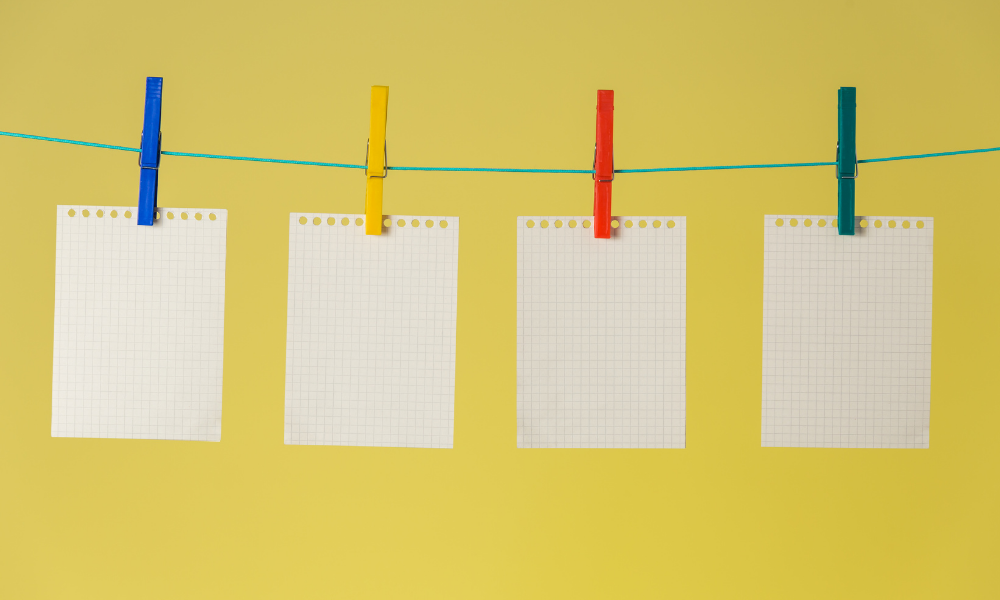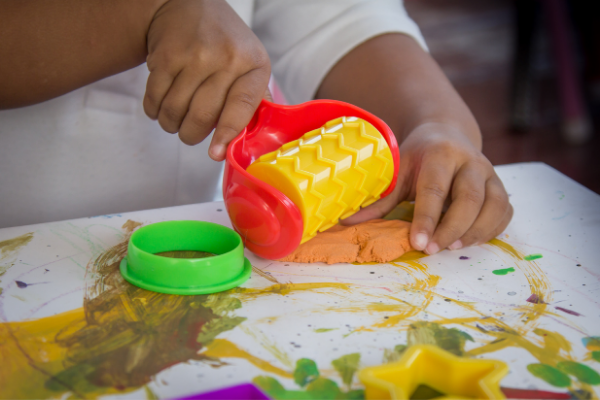Creating the Perfect Daycare Schedule

Published Date: 02/19/21
Creating the Perfect Daycare Schedule
Running a daycare - whether you’re a family childcare provider or a large daycare center - can be hectic and stressful. But providing some structure in the form of a daily schedule can benefit both you and the children you care for. It allows you to be prepared and as importantly, for children to be prepared. Children thrive with routine and having a schedule makes transitions easier and can improve behavior overall.
6 Things to Consider When Creating a Daycare Schedule
Before putting pen to proverbial paper to create your daycare schedule, there are several factors to consider. These include local regulations, the developmental needs of the children, their ages, your program, your staff, and your facility.
1. Local Regulations
Local regulations will dictate certain aspects of your daycare schedule. Your state may set a minimum amount of outdoor time, have laws regarding naps, which may vary for infants and toddlers, and have requirements around meals times. If you’re a childcare center, local laws may also dictate separating infants from toddlers in different rooms, which will impact how you schedule your day for each age group. When you set up your daycare schedule, be certain you’re following all laws governing your daycare center or family childcare.
2. Developmental Needs of Children
Developmental milestones are markers indicating what most typically developing children do at certain ages. They are established so parents, pediatricians, and childcare providers can ensure a child is on track and if milestones aren’t hit, examinations can be done to determine why. Your daycare schedule should be structured to support developmental milestones of the children in your care. If you’re a family childcare provider, you may have infants through school-age children, so you must take into consideration the milestones and needs of a wide range of children.
3. Ages of Children
The ages of the children in your daycare center or family childcare will greatly dictate how long each activity takes. Older children can engage in activities for longer periods of time. The typical attention span for children is their age multiplied by 4 minutes. For example, a 2-year-old generally has an attention span of about eight minutes, whereas a four-year-old may have an attention span of about 16 minutes. Of course, there are variances between children’s attention spans and you should work to extend their attention spans with engaging activities, but knowing how long children generally pay attention makes planning your daycare schedule easier.

4. Your Program
Many daycares, especially home daycare providers, have a more flexible approach to the day and don’t provide as many planned activities as others. If that’s how you run your program you and the children can still benefit from a daily schedule. While plenty of free play is necessary, having a schedule sets boundaries and will help the day run more smoothly. If your daycare has long hours or provides extended care, you may find that child-led activities are necessary during early morning and late-afternoon care.
5. Your Staff
Your staffing needs and daycare schedule go hand-in-hand. Your state’s ratio laws will dictate how many adults per child are needed and if those ratio laws change during certain times of the day, like nap time. You may find that during drop off and pick up, you’re able to consolidate classrooms. During this time, often child-led activities work best so a teacher isn’t interrupted by children coming and going and children don’t have to leave in the middle of a project.
6. Your facility
The layout of your facility will greatly influence how you set up your daycare schedule. If you’re a large center, each classroom may have the same materials, but if you’re a small center or family childcare provider, you may have shared resources. Consider also the location of children in relation to one another. If children don’t all nap at the same time, you may want to schedule outdoor time for nearby rooms while some classrooms are resting. Or, if playground noise is audible from some classrooms, you may want to schedule indoor activities during rest periods, since children shouldn’t have to keep quiet during outdoor play.

Teach Children To Communicate, Not Just To Write
The Benefits of Mixed-Age Groupings in Childcare
How To Create The Perfect Daycare Parent Handbook

Types of Activities to Include in Your Daycare Schedule
Your daycare schedule should include a variety of age and developmentally appropriate activities. Family childcare providers who desire or require less structure should still incorporate these activities and utilize a daily schedule.
Circle Time
Even for the youngest infants, circle time has benefits. Circle time orients the day, promotes motor skills, helps develop positive relationships, is welcoming to new children, encourages socialization, provides routine, and is great practice for listening skills. As a bonus, some daycares require children to arrive by a certain time and having circle time gives you that hard drop off boundary.
Outdoor Time
Playing outside in all weather is crucial for children’s healthy development. Of course, follow local guidelines to ensure your daycare schedule meets at least the minimum amount required in your area and you know when your authorities consider conditions too severe to play outside.
Diapering/Bathroom Use
Your state may require that diapers are changed in certain minimum intervals throughout the day. And scheduling bathroom use for children, in addition to letting them go as needed, can help with potty training.
Sensory Activities
Sensory play is amazing for children’s development from the earliest ages and should be included in your daycare schedule. It actually helps develop children’s ability to do more difficult tasks, as research has shown sensory play builds nerve connections in the brain’s pathways. In addition, it helps improve memory, provides fine and gross motor skill work, promotes problem solving skills, and language development! Sensory play can also be an incredible tool to help calm a child who’s frustrated or anxious.

Art
Including art activities in your daycare schedule is important, as art has an enormous impact on a child’s development - from their brains to the motor skills. In a mixed-age setting, like in a family childcare, you may have to tailor an art project to different age groups, but it can be done with just a bit of advanced preparation.
Free Play
Open-ended play is not only fun, but also enhances children’s development. They learn so much and in mixed-age groupings, younger children learn by watching older children. Mildred Parten outlined the various stages of play and it’s fun to watch children as they develop and move to the next stage. Be sure there’s plenty of free play time in your daycare schedule and give them access to a variety of materials, including dramatic play clothing and accessories.
Story Time
Reading to children is the most important thing you can do to promote literacy. Studies show reading to children also improves behavior! Including daily story time in your daycare schedule is a must, even for infants.
Table Toy Time/Manipulatives
Table toys and manipulatives, like blocks and puzzles, promote problem solving skills, spacial relations, are science lessons (children learn concepts like gravity when blocks tumble), develop motor skills, help with shape and color recognition, classification, and more. They’re an essential part of a great daycare schedule.
Music
We all know music is great, but in early childhood, the benefits are vast. Include both listening to music and making music in your daycare schedule to work cognitive and physical development.
STEM Activities
Science, technology, engineering, and math (STEM) in early childhood education helps children develop a range of interests and promotes problem solving, among other things. Play-based STEM activities can be incorporated into your daycare schedule and don't have to be difficult. Games like “does it float?” and “which bounces higher” engage children’s minds, keeps their attention, and gets the wheels turning in their heads.
Enrichment Activities
Enrichment activities are not only fun, but offer a range of benefits, depending on what the children are engaged in. Yoga and meditation in particular has been shown to offer lifelong advantages and can help children nap better, so including them in your daycare schedule can impact the entire class and your day.
Bottles, Meals, and Snacks
Infants generally need to be fed on-demand, so keep that in mind when planning your daycare schedule. For older children, schedule snacks and meals at appropriate times, leaving enough time for set up and clean up.
Nap Time
Like feeding, infants need to sleep on demand, so that’s an important consideration in your daycare schedule. For older children, follow your local regulations regarding the length of nap time and ratio laws.
How to Implement Your Daycare Schedule
Of course, your daycare schedule can’t include every activity every day and you need some flexibility to allow for the unexpected.
Communicate your daycare schedule to staff
If you are changing your daycare schedule or setting one up for the first time, communicating your expectations to staff is essential to helping the day run smoothly.
Communicate your daycare schedule to parents
While you don’t need to communicate every detail of your daycare schedule every day to parents, they love to know what their children are doing, so give them a sample schedule or two. Be sure to communicate any changes that impact them, like late openings, early dismissals, changes to your hours, or policy changes that impact the schedule.

Use circle time to review your schedule with children. It will help them with transitions throughout the day.
Communicate your daycare schedule to Children
Communicating to children may be the most important aspect of implementing your daycare schedule. Clearly setting up expectations and the rhythm of the day will help with transitions and help prevent meltdowns. You can also give children some control over the schedule by letting them choose between two activities - empowering children helps behavior! Use circle time as an opportunity to go through the day’s schedule and promote literacy by hanging up a poster with the schedule, including both words and pictures.
The Bottom Line
Creating and implementing a daycare schedule can help your program smoothly. Providing children with a routine gives you opportunities to work a variety of cognitive and physical skills and milestones and instill a love of learning. Involving children in planning your daycare schedule can empower them while reviewing it with them during circle time can help with transitions between activities, which are often triggers for outbursts. Keeping lines of communication open between staff and parents about your daycare schedule will also help you operate your program efficiently and effectively.
FAQS When Creating A Daycare Schdeule
Q: What should I do if children don’t want to do the scheduled activities?
Having a child-led program will help children stay engaged in the activities you provide. Child-led learning allows the children to take the lead in selecting the activities they’re interested in. You can still maintain a schedule with child-led learning, but tailor it to their interests. For example, you can still schedule story time, but allow children to pick the story they want to read.
Q: What if a child doesn’t want to transition to a new activity?
It’s great when children are engaged are having fun, but sometimes it’s necessary to move on to something else. Build in time for transitions into your schedule. Reviewing the schedule daily will help children prepare to move on and using a two-minute warning and clean-up song will help with transitions.
Q: How many activities should I include in my daily daycare schedule?
The number of activities you’ll include is directly related to the age of the children and how many hours a day children are in your care. Be sure to leave plenty of time for free play daily, which helps children develop creativity, language skills, imagination, and social emotional skills.
Have questions about creating your pefect daycare schedule? Send them to [email protected]
By Crystal Teegarden
 Crystal is a gentle parenting mama who loves reading, cooking, and exploring new trails with her husband and son. She is from Los Angeles but currently lives in Portland, OR where she is eating all the vegan food.
Crystal is a gentle parenting mama who loves reading, cooking, and exploring new trails with her husband and son. She is from Los Angeles but currently lives in Portland, OR where she is eating all the vegan food.
Paper Pinecone is the #1 most trusted childcare directory. Childcare providers list free so parents can find the best daycare and preschools in their area.
This post may contain affiliate links.
- stacey's blog
- Log in or register to post comments
